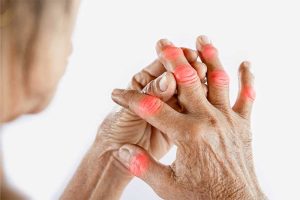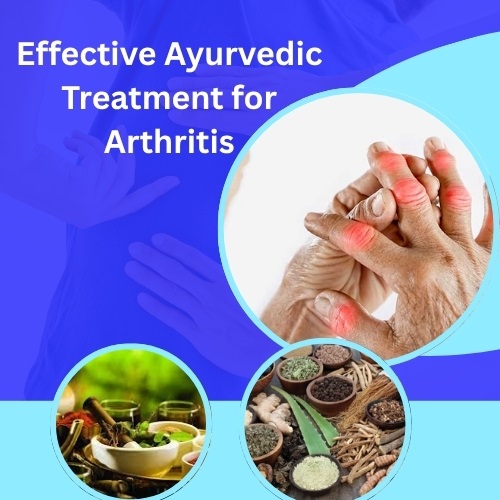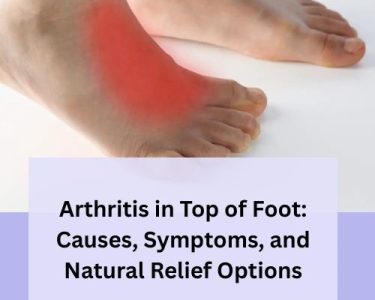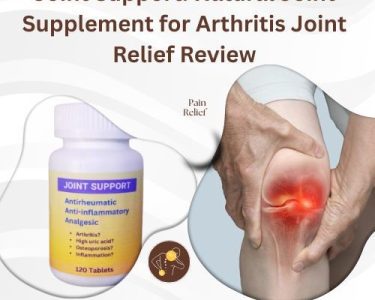Living with arthritis affects your ability to move freely, sleep well, and enjoy daily life. Stiff joints, pain, and inflammation are frustrating symptoms that often lead people to look beyond conventional medicine. Many now explore natural options such as Ayurvedic treatment for arthritis, which offers holistic relief rooted in centuries of traditional knowledge. If you’re tired of pharmaceutical side effects and looking for something more natural and sustainable, Ayurvedic approaches may provide the comfort you need.
What Makes Ayurveda Different?
Ayurveda is one of the oldest medical systems in the world. It doesn’t just focus on symptom control but aims to correct imbalances in the body. According to Ayurvedic principles, arthritis results from an imbalance in Vata dosha, responsible for movement and circulation. When Vata is disturbed, it leads to dryness, stiffness, and pain in the joints.
Unlike conventional treatments that often rely heavily on anti-inflammatory drugs, arthritis Ayurvedic treatment works to restore balance using herbal remedies, dietary changes, detox therapies, and massage therapies. This personalised and whole-body approach appeals to those looking for more natural and sustainable management strategies.

Common Types of Arthritis and Ayurvedic Perspective
Arthritis isn’t just one condition. The most common forms include:
- Osteoarthritis (Sandhivata) – Cartilage wears down over time.
- Rheumatoid Arthritis (Amavata) – An autoimmune condition where the body attacks the joints.
- Gout (Vatarakta) – Uric acid crystals accumulate in the joints.
Ayurveda categorises these differently and uses distinctive methods to address each one. For example, Ayurvedic treatment arthritis knee may focus more on strengthening the joint tissues, nourishing synovial fluid, and reducing local inflammation.
Related Article: Cure Your Arthritis Naturally: 10 Proven Remedies That Work
Key Therapies in Ayurvedic Treatment for Arthritis
Here are the primary techniques used in Ayurvedic treatment plans for arthritis:
Panchakarma Therapy
This is a detoxification process to eliminate toxins or ama from the body. It typically includes:
- Abhyanga (Oil Massage): Warm medicated oils deeply nourish and stimulate blood circulation.
- Swedana (Herbal Steam Therapy): Loosens toxins and improves mobility.
- Virechana (Purgation Therapy): Helps remove inflammatory toxins via the digestive tract.
- Basti (Medicated Enema): Especially effective for Vata disorders like arthritis.
People with severe or chronic pain have found relief through a full Panchakarma programme administered under supervision.
Herbal Remedies
Herbs play a central role in managing arthritis through internal and external use. Some of the most trusted Ayurvedic herbs include:
- Ashwagandha: Reduces inflammation and strengthens bones.
- Guggulu: Known for anti-inflammatory properties and joint rejuvenation.
- Shallaki (Boswellia Serrata): Eases joint pain and improves mobility.
- Turmeric (Haldi): Widely used for its natural anti-inflammatory action.
These herbs can be taken in powder, tablet, or decoction form, depending on your body type and the nature of your arthritis.
Related Article: Arthritis Relief Supplement: Soothe Aching Joints Naturally
Dietary Guidance
Diet plays a significant role in Ayurvedic arthritis treatment. Avoiding foods that aggravate Vata dosha—such as cold, dry, and processed items—is crucial. Instead, opt for:
- Warm, cooked meals
- Ghee and healthy fats for lubrication
- Herbal teas with ginger, cumin, or coriander
- Avoiding heavy meats and dairy
Consistency in diet helps support the body’s natural healing process and strengthens digestion, which is key in managing arthritis.
Yoga and Lifestyle Adjustments
Gentle movement and proper rest are equally important. Ayurveda recommends:
- Yoga Asanas: Vrikshasana (Tree Pose), Tadasana (Mountain Pose), and gentle stretching can keep the joints active.
- Daily Routines: Following a regular sleep-wake cycle, oil massage before a warm bath, and light exercises can regulate doshas.
By maintaining a healthy daily rhythm, you help the body stay balanced and resilient.
Related Article: How to Relieve Arthritis Pain in Hands Naturally and Effectively
Focus on Ayurvedic Treatment Arthritis Knee
Knee arthritis is one of the most disabling forms, especially in people over 50. Joint Support Herbal Supplement for Arthritis and Ayurvedic treatment for the knees includes:
- Janu Basti: A targeted therapy where warm medicated oil is pooled over the knee joint for 30–40 minutes. This lubricates the joint and reduces stiffness.
- Lepam: Application of herbal paste to reduce inflammation.
- Rasnasaptak Kashayam: A popular herbal decoction used in osteoarthritis.
- Dashamoolarishta: A herbal tonic that helps improve mobility a nd reduces pain.
Regular application of these therapies can significantly improve flexibility and quality of life, especially when started early in the condition.
Related Article: Arthritis Sufferers Swear by These 7 Supplements—Find Out Why
Growing Demand for Ayurvedic Arthritis Treatment in Dubai
Many residents and visitors now seek Ayurvedic arthritis treatment in Dubai, where modern wellness centres and licensed Ayurvedic practitioners offer personalised care. Clinics provide authentic therapies following classical texts, often combining them with modern diagnostic support.
These services are especially popular among expatriates who want natural alternatives but also appreciate a medically supervised environment. If you’re looking for Ayurvedic treatment arthritis knee options while in Dubai, it’s best to look for DHA-approved clinics with qualified Ayurvedic physicians.
Related Article: Joint Support: Natural Joint Supplement for Arthritis Joint Relief Review
What to Expect During Your Treatment
If you are new to Ayurveda, here’s how a typical treatment process unfolds:
- Initial Consultation: Assessment of body constitution (prakriti), current imbalance (vikriti), and detailed history.
- Diagnosis: Pulse examination, tongue analysis, and questioning about digestion and sleep.
- Therapy Plan: A personalised mix of herbal medicine, external therapies, dietary guidelines, and yoga.
- Monitoring: Periodic follow-ups to track improvements and make necessary adjustments.
Treatment plans usually span 3 to 8 weeks, depending on the chronicity of arthritis.
Safety and Effectiveness
Ayurveda uses time-tested, natural formulations that are generally safe under expert guidance. However, always ensure:
- You consult a qualified Ayurvedic practitioner.
- You do not self-medicate with herbal powders or pills bought online.
- You disclose any ongoing conventional medication.
Combining Ayurvedic and conventional therapies should only be done under professional advice.
Related Article: Best Joint Supplements of 2025, West Virginia – Herbal Care Products
Who Can Benefit from Ayurvedic Treatment for Arthritis?
This approach is suitable for people who:
- Want to reduce dependency on painkillers
- Prefer natural and holistic care
- Suffer from mild to moderate arthritis
- Wish to prevent progression of joint damage
- Are looking for long-term lifestyle support
Those with severe joint damage or requiring surgery can still benefit from Ayurvedic treatments to support post-operative recovery or reduce medication load.
Final Thoughts
If you’re struggling with joint pain and conventional treatments haven’t worked well for you, it might be time to explore Ayurvedic treatment for arthritis. With a focus on balance, diet, and natural therapies, Ayurveda supports long-term relief and better joint function.
Whether you’re specifically interested in arthritis Ayurvedic treatment for overall wellness or targeted support like Ayurvedic treatment arthritis knee, there’s a wide range of therapies available. Even international locations such as Ayurvedic arthritis treatment in Dubai are helping make this traditional approach more accessible.




